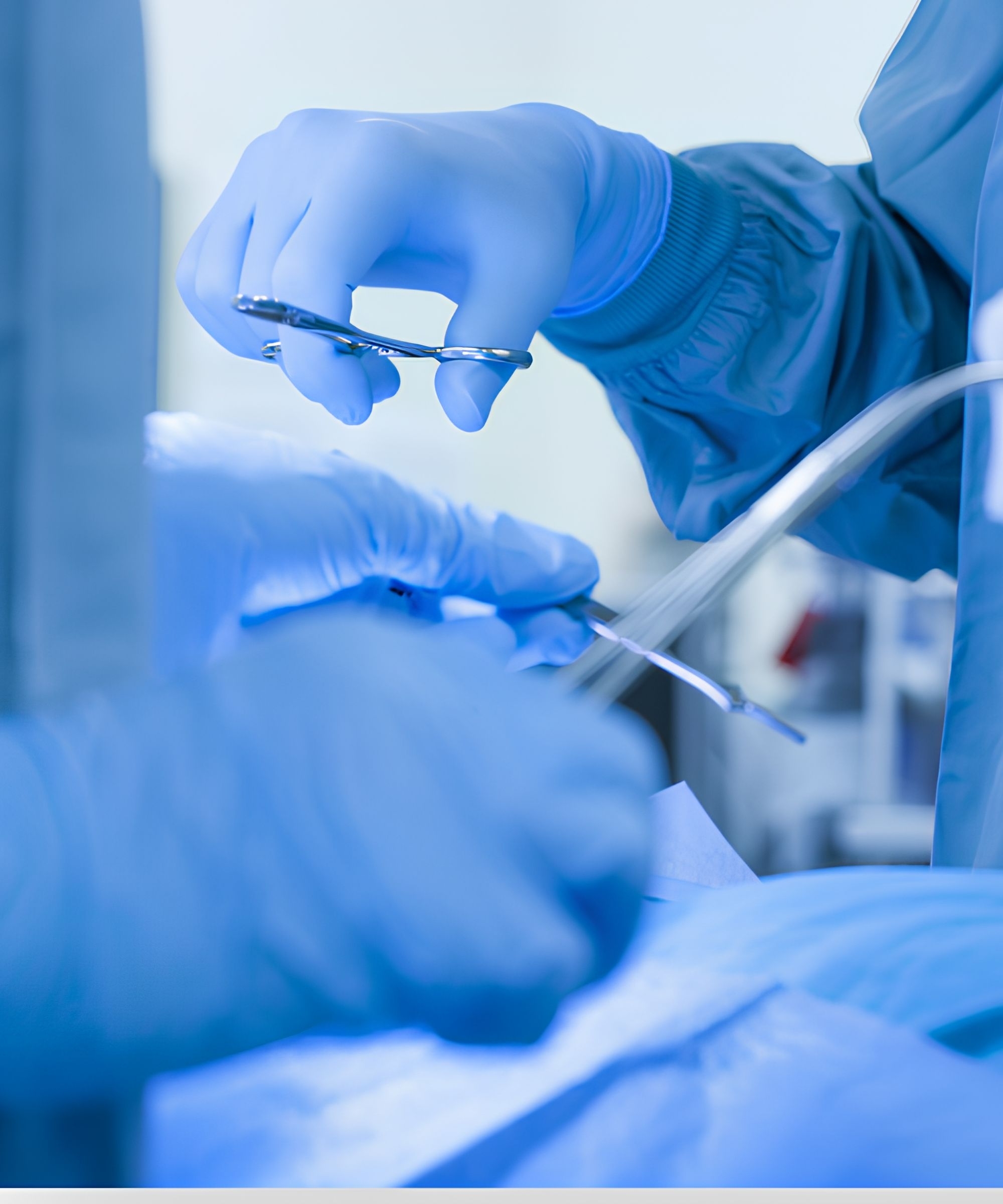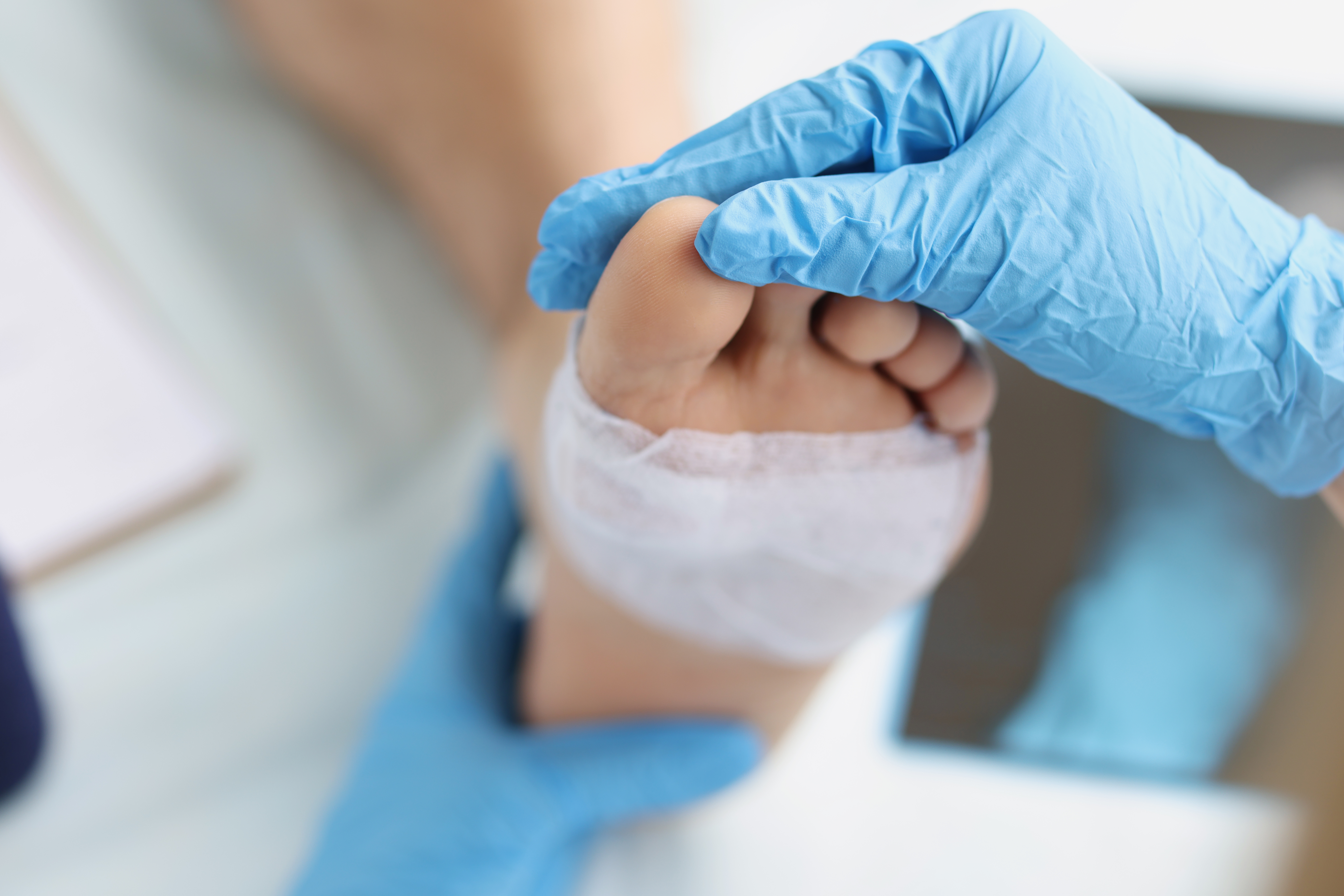Cellular and Tissue-Based Products
Cellular and Tissue-Based Products
Discover advanced wound healing with cellular and tissued-based products at Innovative Wound Care Specialists.
Also known as CTPs, cellular and tissue-based products are biologic wound dressings for wound healing. These products can be either derived from animal or human cells and tissues. Products sourced from animal or human cells work to promote wound healing by creating a scaffold for the body’s own cells to grow onto. CTPs are often considered a substitute for human skin, mainly for severe wounds or burns. These products can be either temporary or permanent.
Cellular and tissue-based products are used for wounds which are chronic or non-healing. Since their properties are comprised of biological cells to generate new cells in a wound, CTPs are best used to treat:
- Diabetic foot ulcers or wounds
- Venous leg ulcers
- Severe burns
- Bone and cartilage injuries
- Non-healing surgical wounds
Any wounds that have significant loss to the skin and are unable to fully heal will most likely require additional aid through a CTP.
Learn More About CTPs
Since cellular and tissue-based products are sourced from either animal or human cells, they provide a biological structure to promote optimal wound healing. Once a cellular and tissue-based product is applied for structural support for cells to a wound, the product will begin to work in the following ways:
Release of growth factors and cytokines (helps to control inflammation) to stimulate blood vessel formation, cell migration, and tissue regeneration. These factors accelerate the healing process by promoting fibroblast activity, which helps to provide structural support to the tissues.
Decrease inflammation and the likelihood of infection by strengthening the immune response in the wound, with the help of certain products like amniotic tissues grafts that have anti-inflammatory properties. These properties help to modulate the immune response and reduce the risk of infection. This is particularly beneficial in chronic wounds, where prolonged inflammation can delay healing.
Stimulate cell proliferation and migration with the help of living cell-based products with keratinocytes and fibroblasts that secrete growth factors and proteins. These cells secrete growth factors and extracellular matrix proteins, encouraging the body’s own cells to form new tissue.
Creating blood flow to the wound to improve oxygen and nutrient delivery by stimulation of new capillaries in the wound bed. This is an important function for diabetic ulcers, venous leg ulcers, and pressure sores often due to poor circulation.
Serve as a temporary skin substitute by protecting the wound from external contamination while the body regenerates its own tissue. This can be useful for burn patients or large traumatic wounds.
Additionally, cellular and tissue-based products can carry the following types of cells:
- Stem Cells
- Fibroblasts
- Keratinocytes
- Epithelial cells
All of these cells are also present in the human body, which helps the cellular and tissue-based product to better adhere to the skin, triggering the natural healing properties in the body to regenerate new tissue with the help of these extra cells.
For patients who are facing severe ulcers, wounds, or burns, CTPs can offer a variety of benefits such as:
- Additional Healing: Cellular and tissue-based products create a supportive environment for severe wounds to heal with the addition of growth factors.
- Decrease Pain: Elements of CTPs include anti-inflammatory properties which decrease swelling and in turn decrease pain during the healing process.
- Decrease of Nerve Damage: Due to CTPs increasing the healing time, this creates less opportunities for nerve damage to the nerves surrounding the wound.
- Less Surgery: If a CTP is successful in healing the wound, then there is typically no additional need for a more invasive treatment like surgery.
Patients with lung disease, a history of ear surgery, a cold or flu, or related conditions should discuss these risks with their healthcare provider.
While cellular and tissue-based products can offer optimal healing and benefits for patients, there are side effects associated with these products patients should be aware of. Some common side effects of cellular and tissue-based products include:
- Infection
- Severe allergic reactions
- Development of chronic pain
Most of these side effects are a result of improper application by an unskilled provider. Additionally, since CTPs are derived from human blood and tissues, it can carry bacteria and fungi if cross-contamination occurs or CTP equipment is not properly sterilized.

Cellular and tissue-based products for wound healing can be made from either animal or human cells. Human based CTPs are typically used on humans, as they are more compatible. Both animal and human based CTPs are regulated and must meet standards and regulations for use.
The most common types of cellular and tissue-based products include:
Human Skin Allograft: Bioengineered from human skin and tissue, a human skin allograft is used to treat, heal, and close severed wounds on the body. Human skin allografts are thin and pale, similar in appearance to a thin layer of flesh-colored plastic. This type of allograft may also have a wrinkled textured feel, but it is covered with bandages once applied to the wound. Doctors typically use a human skin allograft on venous and diabetic foot ulcers, skin infections, and burns.
Acellular Dermal Matrix: Acellular dermal matrices are the most common CTPs used in wound healing. ADMs are made from the dermal layer of human or animal skin, and are cell-free. Collagen fibers, elastin, and growth factors are the main components of an ADM and are used on patients who have undergone reconstructive surgery on the breasts, face, abdomen, and for burn and chronic wound patients. ACMs have the appearance similar to a layer of leather with a natural skin color look.
Composite Matrix: CTPs, such as a composite matrix, are composed of both tissue-based cells and a synthetic mesh to serve as a scaffold for optimal healing by mimicking the skin’s natural layers. Composite matrices look like a thin, flexible mesh structure resembling the natural tissue of skin. These types of CTPs are used on chronic wounds, ulcers, and surgical non-healing wounds.
Allogenic Matrix: Allogenic matrices are mostly cell-free and derived from human bones, skin, or cartilage, preserving only its collagen fibers and elastin. Most allogenic matrices are thin, white, and mesh-like sheets. CTPs of this kind offer additional structure to support new cell growth for wounds. Allogenic matrices are used on patients who have diabetic foot ulcers or severe burns.
While cellular and tissue-based products can be life changing for patients who seek severe wound healing, there are conditions that would make CTPs incompatible for treatment.
Cellular and tissue-based products are not recommended for:
- Wounds with active infections
- Uncontrolled bleeding of wound
- Possibility of allergy to a CTP
- Patients who are against treatment from cellular products derived from humans or animals
A skilled provider will be able to determine if your wound would benefit from treatment with cellular and tissue-based products based on your medical history and current health condition.


If you have had your wound for over a month and it has not decreased in size by at least 50%, or if it becomes infected, you should consider seeking professional assistance for your wound. A wound that is draining fluid, has a foul odor, or is very painful may be infected and requires medical attention. Other worrisome symptoms include fever and increasing swelling or redness around the wound.
Please consult your healthcare provider if you suspect you may need cellular and tissue-based products.
Consult your healthcare provider to determine if CPT is suitable for your condition. During a consultation for CPT, your provider will be able to answer any questions you may have and provide you with a better understanding of this treatment.
To begin the conversation of receiving Cellular and Tissued-Based Treatments at a qualified facility with seasoned wound care professionals—reach out to our team at Innovative Wound Care Specialists. We’re here to help.
Contact us by phone (810) 600-2030 or email info@innovativewoundspecialists.com and our friendly staff will assist you every step of the way. Don’t wait any longer to explore the benefits of CPT—get started today!
Cellular and Tissue-Based Products FAQs
When Is a CTP Temporary or Permanent?
Most CTPs are considered temporary due to the nature of the product, with a goal of generating new cells and tissues from the patient’s body for healing. The duration of treatment with a CTP is dependent on how quickly a wound is healing and if the treatment has been successful, meaning your body has not rejected the cellular and tissue-based product.
Are All Cellular and Tissued-Based Products Successful?
No, not all CTPs are successful for patients as some may not completely heal severe wounds. However, the success can be dependent on the severity of the wound and a patient’s reaction to the treatment. In some cases, the body can trigger an immune response to the product and literally reject the CTP, known as graft rejection.
Where Do Cellular and Tissue-Based Products Come From?
Cellular and tissue-based products come from donated human tissue, and in some cases can be sourced from animals like pigs or cows.
How Are CTPs Applied to the Skin?
After the wound is properly assessed and healed, a CTP is applied to the wound site with another wound dressing to secure and protect the product.
